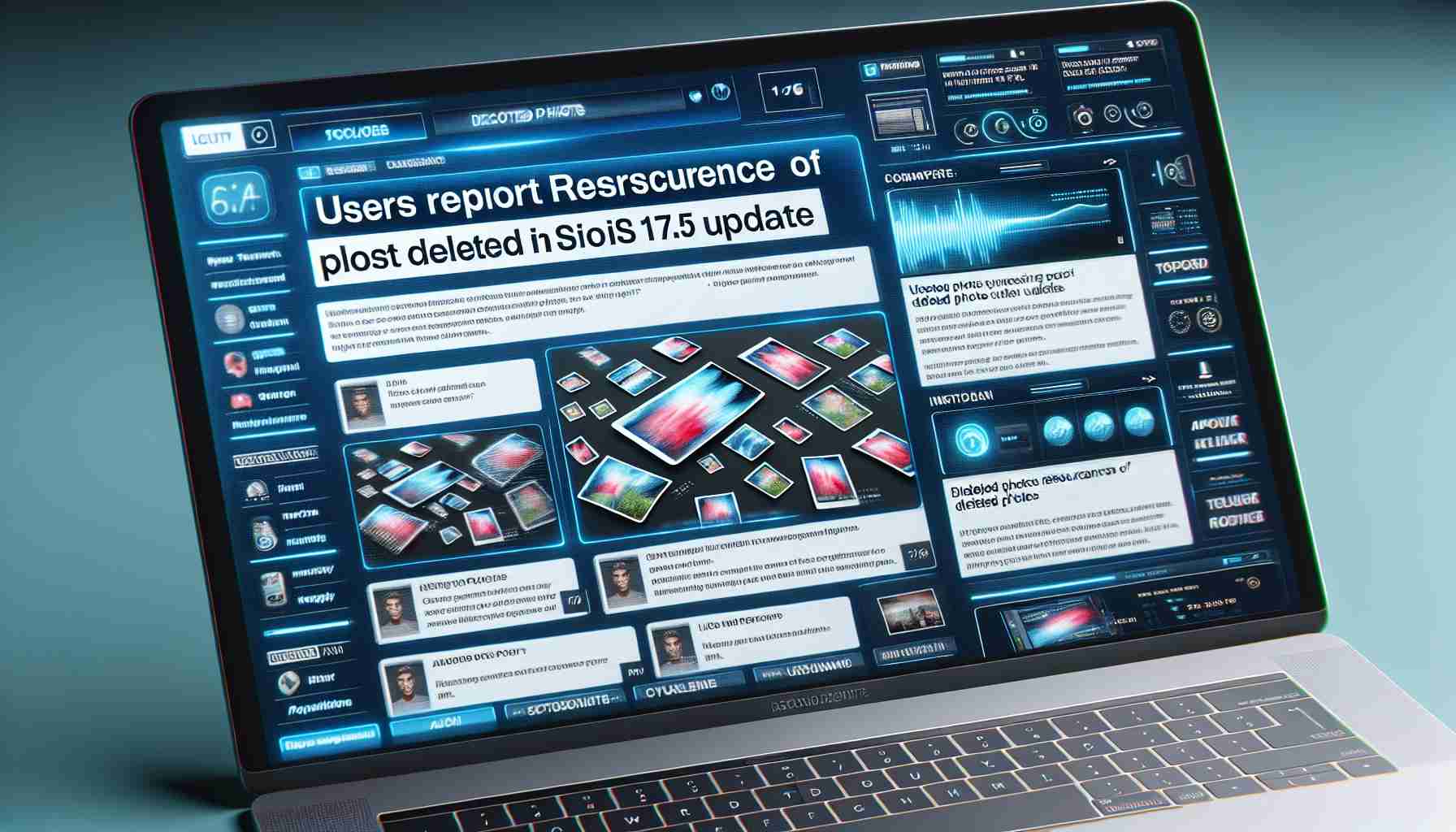iPhones Encounter Unexpected Photo Recovery Glitch
Following the recent release of the iOS 17.5 update, a number of iPhone users have observed an unexpected issue: images that they had previously deleted from their devices are reemerging. This peculiar glitch was brought to public attention after users began to express their concerns on various social media platforms and online forums.
One individual highlighted their discomfort upon discovering that intimate photos, intended to have been erased years prior, had resurfaced on both their iPhone and iPad. Elsewhere, another user experienced a similar scenario with old photos repeatedly appearing in their Photos app, despite numerous attempts to delete them.
Furthermore, a minor subset of users have reported the opposite phenomenon – missing photos that were not intentionally deleted have now returned following the update. The situation has been perplexing, as even individuals who do not use iCloud or store data on Apple services are noting this digital anomaly.
Concerns Over Apple’s Privacy Approach
The incident has ignited discussions concerning Apple’s handling of user data and privacy practices. According to Apple’s support documentation, deleted items should vanish from all devices once removed, with a grace period of 30 days for potential recovery before final deletion.
As this issue unfolds, many are awaiting a response from Apple regarding the reoccurrence of deleted photos due to the iOS 17.5 update. An inquiry has been made, but at the time of reporting, there has been no official statement from the tech giant to clarify the situation or provide instructions for affected users.
Key Questions and Answers:
– Why are deleted photos reappearing after the iOS 17.5 update? The exact cause of the reappearing photos after the iOS 17.5 update is not specified in the article, but it is likely due to a software glitch or issue with the photo management system within the iOS platform.
– Are the reappearing photos a privacy concern? Yes, the reemergence of previously deleted intimate or sensitive photos can pose a significant privacy concern for users, raising questions about Apple’s handling of stored or deleted data.
– What should users do if they are affected by this glitch? While the article does not provide direct steps for remediation, common advice includes restarting the device, checking for additional software updates that might address the issue, or contacting Apple Support for further assistance.
Key Challenges or Controversies:
– Data Privacy: Apple has been known for its strong stance on user privacy. This incident raises concerns about the integrity of their privacy policy and user data handling. It challenges the trust users place in Apple’s ability to safeguard their personal data, especially since deleted items should technically be irrecoverable after 30 days.
– Software Reliability: The occurrence of software glitches following an update is not uncommon, but it becomes a significant issue when it affects personal data. Trust in the reliability of updates is crucial for users to feel secure when installing new software versions.
– Communication: A delay or lack of communication from Apple in instances like this can lead to user frustration and dissatisfaction. The company’s response time and the method of communication during software issues are critical in maintaining its reputation and user trust.
Advantages and Disadvantages:
– Advantages: For those users who experienced the return of non-intentionally deleted photos, it could be a fortunate event, akin to restoring lost memories without having to go through data recovery processes.
– Disadvantages: For those with sensitive photos returning, it can be alarming and upsetting. It suggests a lack of control over personal content and concerns over whether deletion is genuinely permanent on iOS devices.
To remain informed on Apple’s announcements or potential software updates addressing this issue, one can refer to:
– Official Apple Website
– Apple Support
These links are to the primary domains and will provide official information when Apple releases statements or additional support information. Please note that beyond the scope of the article, users can explore troubleshooting forums or community support groups for interim solutions.
